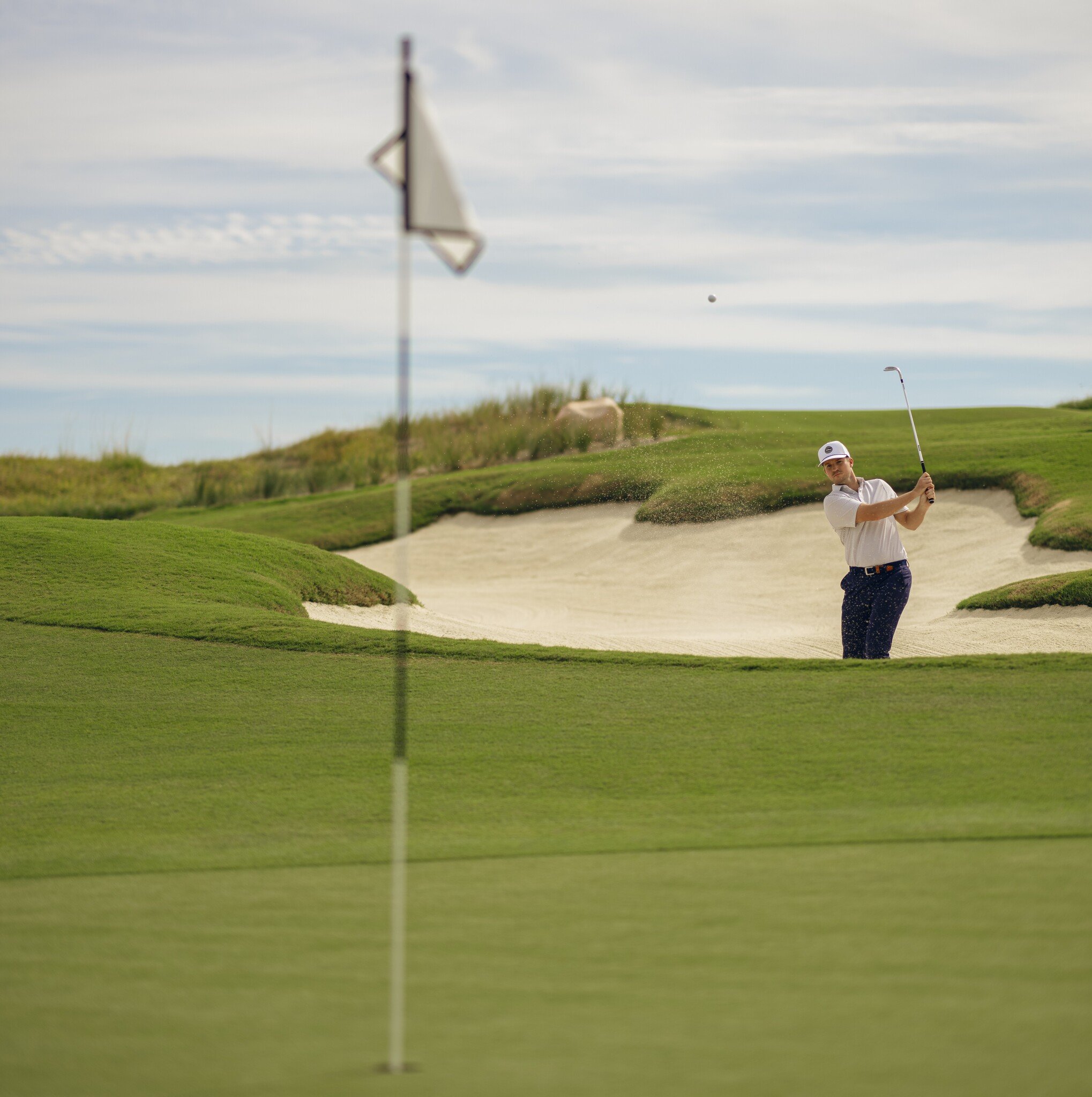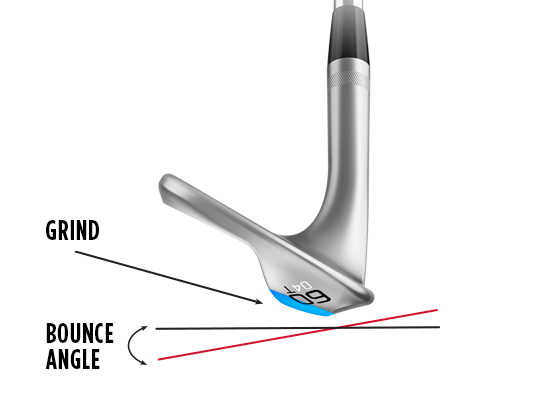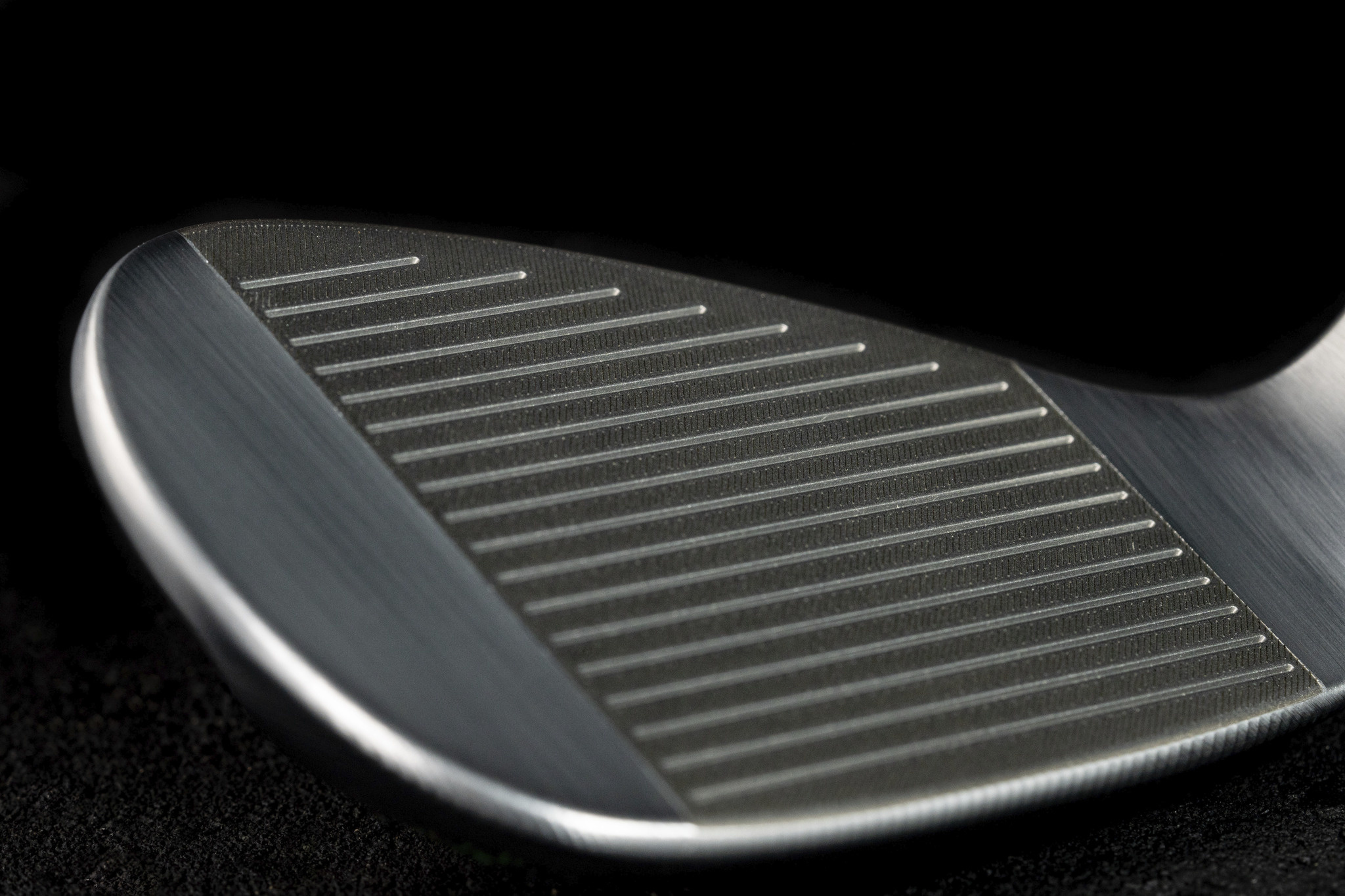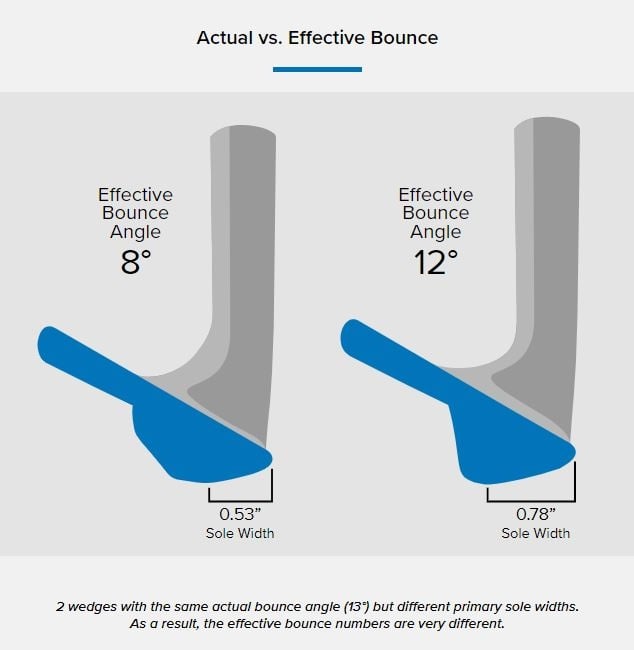Looking to elevate your short game and conquer the greens? Our comprehensive golf wedge buying guide is here to help you make the right choice. Whether you're a beginner honing your skills or a seasoned golfer aiming for precision shots, we've got you covered. From understanding different wedge types to selecting the ideal loft and grind options, our guide provides valuable insights to enhance your performance. Explore the latest wedge technologies, including face inserts and groove designs, and discover how customization options can tailor your wedge to fit your unique playing style. With expert tips, budget considerations, and user reviews, finding the perfect wedge has never been easier. Elevate your game and lower your scores with the right wedge in your bag.

When purchasing a wedge there are numerous factors to consider based on both personal preference and skill level so it is important to consider the following:
1. Wedge Types and Loft: Understand the different wedge types—pitching wedge, gap wedge, sand wedge, and lob wedge. Select lofts that complement your set, providing the right distance coverage for various situations. For more information read our Wedge Types and Lofts section.
2. Bounce Angle: Wedges have various bounce angles, which affects how the wedge interacts with the turf. Higher bounce is suitable for softer conditions, while lower bounce excels in firm or tight lies. Align with your playing preferences and course conditions. For more information read our Bounce Angles section.
3. Grind Options: Grinds influence sole shape and turf interaction. Full, mid, and low grinds cater to different swing styles. Choose a grind that complements your technique, promoting consistent performance. For more information read our Grind Options section.
4. Material and Construction: Assess material options—stainless steel, carbon steel, or specialty alloys. Each material influences feel, durability, and performance. Construction details, such as cavity back or muscle back, impact forgiveness and shot control. For more information read our Material and Construction section.
5. Shaft and Grip: Consider shaft material (usually steel or graphite) and flex for optimal feel. Ensure the grip suits your preferences, as it plays a crucial role in control during short shots. For more information read our Shaft and Grip section.
6. Face Technology: Explore face technology innovations. Some wedges feature milled faces or grooves designed for enhanced spin and control, especially in delicate chip and pitch shots. For more information read our Face Technology section.
7. Sole Width: Wider soles provide stability, while narrower soles enhance versatility. Tailor your choice to your preferred playing style and the course conditions you encounter. For more information read our Sole Width section.
8. Brand Reputation: Research reputable brands known for producing quality wedges. Consider user reviews, professional endorsements, and brand reputation for consistency and innovation.
Wedge Types and Lofts
When it comes to golf wedges, understanding the different types and lofts is essential for optimizing your short game. Here's a guide to help you navigate the various wedge options available:

1. Pitching Wedge (PW): The pitching wedge is typically included as part of a standard iron set and is designed for approach shots from the fairway.
-It usually has a loft ranging from 43 to 47 degrees, making it ideal for medium-range shots of around 100 to 125 yards.
2. Gap Wedge (GW) or Approach Wedge (AW): The gap wedge, also known as the approach wedge, fills the gap between the pitching wedge and the sand wedge.
-It typically has a loft ranging from 48 to 52 degrees
3. Sand Wedge (SW): The sand wedge is specially designed to help golfers escape from bunkers and navigate through sand traps.
-It usually has a loft ranging from 54 to 56 degrees, providing the necessary loft to lift the ball out of the sand and onto the green.
4. Lob Wedge (LW): The lob wedge is the highest lofted wedge in a golfer's arsenal and is primarily used for high, soft shots around the green.
-It typically has a loft ranging from 58 to 64 degrees, allowing golfers to execute delicate shots with precision and accuracy.
5. Gaping Wedges (PW, GW, SW, LW): Some golfers prefer to customize their wedge setup by adjusting the lofts of their gap, pitching, and sand wedges to achieve specific distance increments.
-Gaping wedges allow golfers to fine-tune their short game by ensuring consistent yardage differentials between each wedge in their bag.
-Typically golfers carry 3-4 wedges with 4-6 degrees of separation between wedges. For example if your pitching wedge is 46 degrees you would typically go with a 52 and 58 degree wedge as well.
When selecting wedges, consider factors such as your typical playing conditions, shot preferences, and areas of your short game that need improvement. Experimenting with different loft options and wedge types can help you find the perfect combination to elevate your performance around the greens.
Whether you're looking to escape bunkers with ease or execute precise approach shots, having the right wedge lofts in your bag can make all the difference in your ability to navigate the challenges of the golf course with confidence and precision.
Bounce Angles
Understanding bounce angles is essential for golfers looking to optimize their wedge play and improve their performance around the greens. Here's a comprehensive guide to help you grasp the concept of bounce angles and how they impact your short game:

1. What is Bounce Angle?
-Bounce angle refers to the angle formed between the leading edge of a wedge and the lowest point of the sole. It plays a crucial role in determining how the wedge interacts with the turf and sand during a shot.
2. Types of Bounce:
-Low Bounce: Wedges with low bounce angles (typically 4-6 degrees) are well-suited for players with shallow attack angles and firm turf conditions. Low bounce wedges are ideal for shots from tight lies and tight lies, helping prevent the club from digging into the ground.
-Standard/Mid Bounce: Standard or mid bounce wedges (usually 8-10 degrees) offer versatility and are suitable for a wide range of playing conditions. They provide a balance between digging and sliding through the turf, making them a popular choice for most golfers.
-High Bounce: High bounce wedges (often 12 degrees or more) are beneficial for players with steeper attack angles and soft turf or sand conditions. High bounce wedges help prevent the leading edge from digging too deeply into the ground, promoting cleaner contact and better performance from bunkers and fluffy lies.
3. Impact on Shot Performance:
-Low Bounce: Low bounce wedges are excellent for players who prefer to pick the ball cleanly off the turf or encounter firm course conditions. They are well-suited for tight lies and tight lies, providing maximum versatility and control.
-Standard/Mid Bounce: Standard or mid bounce wedges are the most versatile option, suitable for a wide range of players and playing conditions. They offer a good balance between digging and sliding through the turf, making them a reliable choice for most shots around the green.
-High Bounce: High bounce wedges excel in soft turf or sand conditions and are particularly useful for players who struggle with bunker shots or encounter fluffy lies. They help prevent the club from digging too deeply into the ground, promoting cleaner contact and better performance from challenging lies.
4. Choosing the Right Bounce:
-When selecting a wedge, consider factors such as your typical playing conditions, swing technique, and shot preferences. Experimenting with different bounce angles can help you find the ideal wedge setup to optimize your short game performance.
Grind Options
Understanding wedge grind options is crucial for golfers seeking to tailor their short game clubs to their playing style and course conditions. Grinds refer to the shaping and contouring of the sole of a wedge, influencing how it interacts with the turf and sand. Here's a comprehensive overview of the various wedge grind options:

1. Standard Grind: The standard grind is a versatile option suitable for a wide range of playing conditions and swing styles.
-It features a moderate amount of sole width and bounce, providing a balanced combination of forgiveness and playability from different lies.
-The standard grind is an excellent choice for golfers who prefer a neutral sole design that performs well in various situations.
2. Full Sole Grind: The full sole grind features a wider sole with more bounce, making it well-suited for players with steeper attack angles and softer turf conditions.
-It helps prevent the leading edge from digging into the ground, promoting cleaner contact and better performance from bunkers and fluffy lies.
-The full sole grind is ideal for golfers who struggle with bunker shots or encounter challenging lies around the green.
3. Mid Sole Grind: The mid sole grind offers a balance between the standard and full sole grinds, providing versatility and playability in a variety of situations.
-It features a slightly narrower sole with moderate bounce, making it suitable for players with neutral or slightly steeper attack angles.
-The mid sole grind is a popular choice for golfers seeking a versatile wedge option that performs well from different lies and turf conditions.
4. Heel Grind: The heel grind removes material from the heel portion of the sole, allowing golfers to open the clubface more easily for delicate shots around the green.
-It promotes increased versatility and shot-making ability, particularly for players who prefer to manipulate the clubface to execute various types of shots.
-The heel grind is beneficial for golfers who frequently use flop shots, bunker shots, and other finesse shots that require precise control over the clubface angle.
5. Toe Grind: The toe grind removes material from the toe portion of the sole, providing relief and allowing golfers to close the clubface more easily for controlled shots.
-It enhances shot-making versatility and helps golfers execute draw shots and low-trajectory shots with greater precision.
-The toe grind is suitable for players who prefer to work the ball and shape their shots to fit specific course conditions and shot requirements.
6. Custom Grinds: Some wedge manufacturers offer custom grind options, allowing golfers to tailor their wedges to their individual preferences and playing styles.
-Custom grinds may involve modifying the sole shape, bounce angle, or leading-edge design to optimize performance for specific shot types or course conditions.
-Golfers can consult with a professional club fitter or wedge specialist to determine the best custom grind options based on their swing characteristics and short game needs.
Material and Construction
Selecting the right wedge material and construction is crucial for golfers looking to optimize their short game performance. Here's an in-depth guide to help you understand the different materials and construction methods used in wedges:
1. Material Options:
-Stainless Steel: Stainless steel wedges offer durability and reliability, making them a popular choice among golfers seeking a classic look and solid feel at impact. They provide consistent performance and are suitable for a wide range of playing conditions.
-Carbon Steel: Carbon steel wedges provide a softer feel and enhanced feedback compared to stainless steel. They are preferred by many skilled players for their responsiveness and ability to control trajectory and spin around the greens.
-Forged Construction: Forged wedges are crafted from a single piece of metal that is heated and hammered into shape. This process creates a dense and uniform grain structure, resulting in superior feel and consistency. Forged wedges are often made from carbon steel and are favored by better players for their precision and workability.
-Cast Construction: Cast wedges are made by pouring molten metal into a mold and allowing it to cool and solidify. This method offers manufacturers greater flexibility in design and allows for the incorporation of advanced features such as perimeter weighting and cavity back designs. Cast wedges are typically made from stainless steel and are well-suited for golfers seeking forgiveness and ease of use.
Raw faces are produced by some companies which results in an increased amount of oxidization (rust) which can increase friction of the clubface when contacting the ball. These clubs typically cost more and offer a unique look to the wedge.
2. Face Technology:
-Milled Face: Some wedges feature milled clubfaces, where the grooves and face texture are precisely CNC-milled to ensure maximum spin and control on approach shots and pitches. Milled faces provide enhanced consistency and spin performance, particularly in wet or rough conditions.
-Groove Design: The design and configuration of the grooves on the clubface play a significant role in generating spin and control. Wedges with aggressive groove patterns and deeper grooves are more effective at channeling moisture and debris away from the ball, resulting in improved contact and spin on shots from the rough or sand.

3. Customization Options:
-Many wedge manufacturers offer customization options, allowing golfers to tailor their wedges to their individual preferences and playing styles. Customization options may include adjustable hosels, shafts, grips, and loft/lie adjustments to optimize performance for specific swing characteristics and course conditions.
Shaft and Grip

Understanding the differences in shafts and grips is essential for golfers seeking to optimize their wedge play and overall short game performance. Here's an in-depth explanation on how shaft and grip plays a factor in wedge performance:
1. Shafts for Wedges:
-Shaft Flex: The flex of the shaft influences the feel and performance of wedge shots. Stiffer shafts, such as those with an extra stiff or stiff flex, provide more stability and control for golfers with faster swing speeds. Conversely, softer flex shafts, like regular or senior flex, can help golfers generate more clubhead speed and launch the ball higher. One thing to consider is that when purchasing individual wedges from a company they typically only come in one flex called wedge flex.
-Shaft Weight: The weight of the shaft affects the overall feel and balance of the wedge. Heavier shafts provide more control and stability, while lighter shafts may help increase clubhead speed and generate more distance. Golfers should select shaft flex and weight options that match their swing characteristics and preferences.
-Shaft Material: Shafts for wedges are commonly made from steel or graphite. Steel shafts offer a solid feel and consistent performance, making them a popular choice for many golfers. Graphite shafts are lighter and can help increase clubhead speed, particularly for players with slower swing speeds or seeking additional distance.
-Shaft Length: Shafts for wedges are the shortest club in a golf bag besides the putter. This is to help with control and consistency around the greens.
2. Grips for Wedges:
-Grip Size: The size of the grip affects how golfers hold the club and control the clubface through the swing. Larger grips may help reduce excessive hand action and promote a smoother, more consistent stroke, while smaller grips offer increased feel and maneuverability for shot shaping and trajectory control.
-Grip Texture: The texture of the grip influences grip pressure and comfort during the swing. Grips with a tacky or textured surface provide better traction and control, especially in wet or humid conditions. Golfers should choose grip textures that suit their preferences and playing conditions for optimal performance.
-Grip Material: Grips for wedges are typically made from rubber, synthetic materials, or corded materials. Rubber grips offer a soft feel and excellent shock absorption, while synthetic and corded grips provide enhanced traction and durability. Golfers should consider the weather conditions and personal preferences when selecting grip materials.
Face Technology
Wedge face technology plays a crucial role in shaping a golfer's short game performance, providing control, spin, and consistency on shots around the greens. Here's a comprehensive explanation of wedge face technology:
1. Groove Design: Grooves are the parallel lines or channels on the clubface that come into direct contact with the golf ball at impact. They play a vital role in channeling moisture and debris away from the ball to ensure clean contact and maximum spin. Advanced groove designs feature precise spacing, depth, and edge sharpness to optimize spin performance and control. Laser-milled or CNC-milled grooves provide superior consistency and spin rates, especially in wet or rough conditions. The two types of wedge grooves includes normal and full-face:
-Normal Grooves: Normal grooves are the traditional groove pattern found on most wedges. These grooves are typically concentrated in the center and lower portion of the clubface.
-Normal grooves are designed to maximize spin and control on shots struck with the sweet spot or slightly towards the bottom of the clubface.
-While effective for most shots, normal grooves may not provide as much spin and control on shots struck higher on the clubface, such as open-faced shots or shots from the rough.
-Full-Face Grooves: Full-face grooves extend across the entire width of the clubface, covering the entire hitting area from heel to toe.
-These grooves are designed to maximize spin and control on shots struck anywhere on the clubface, including the toe and heel regions.
-Full-face grooves are particularly beneficial for open-faced shots, flop shots, and shots from the rough, where golfers may contact the ball higher on the clubface.
-By extending the grooves across the entire face, full-face grooves help ensure consistent spin rates and performance on a wider range of shots and lie conditions.

2. Groove Configurations: Manufacturers employ various groove configurations to enhance spin and control on different types of shots. V-grooves, U-grooves, and micro-grooves are common groove patterns designed to maximize spin and promote consistency.
-Aggressive groove designs with sharper edges and tighter spacing are more effective at gripping the ball and generating spin, particularly on partial shots and pitches around the green.
3. Face Texture: The texture of the clubface also influences spin and control. Milled clubfaces feature precision-machined surface roughness that increases friction between the ball and the face, resulting in enhanced spin rates and consistency.
-Milled face technology ensures uniform texture and groove depth across the entire clubface, providing golfers with predictable spin performance and confidence on approach shots and pitches.
4. Spin Performance: The combination of groove design and face texture directly impacts spin performance on wedge shots. Well-designed grooves and milled faces help create additional friction between the ball and the clubface, resulting in increased spin rates and improved control.
-High spin rates allow golfers to stop the ball quickly on the green, hold approach shots close to the pin, and execute delicate shots with precision and accuracy.
5. Customization Options: Many wedge manufacturers offer customization options, allowing golfers to personalize their wedge specifications based on their preferences and playing style. Custom grind options, loft adjustments, and shaft selections enable golfers to optimize spin and control for their individual needs.
Sole Width
Understanding wedge sole width is essential for golfers aiming to optimize their short game performance and versatility around the greens. Here's a detailed explanation of wedge sole width:
1. Definition of Sole Width:
-Sole width refers to the measurement of the bottom surface of the wedge, extending from the leading edge to the trailing edge. It plays a significant role in how the wedge interacts with the turf and sand during the swing, impacting turf interaction, forgiveness, and shot-making capabilities.

2. Versatility and Playability:
-The width of the sole determines the amount of surface area that comes into contact with the turf or sand. Wider sole widths provide greater forgiveness on off-center strikes and promote smoother turf interaction, making them ideal for golfers seeking maximum playability from a variety of lies.
-Conversely, narrower sole widths offer increased versatility and shot-making capabilities, allowing golfers to manipulate the clubface and execute a wider range of shots with precision and control. Narrower soles are favored by better players and those who prefer to vary their trajectory and spin on short game shots.
3. Turf Conditions:
-The optimal sole width depends on the type of turf conditions typically encountered on the golf course. In soft or fluffy conditions, wider sole widths help prevent the leading edge from digging too deeply into the turf, promoting cleaner contact and better performance from bunkers and rough lies.
-On firm or tight lies, narrower sole widths allow golfers to make crisp, clean contact with the ball, promoting a more consistent and predictable ball flight and trajectory. Golfers can adjust their sole width based on the firmness of the turf and their preferred playing style.
4. Bounce Angle Relationship:
-Sole width is closely related to bounce angle, which refers to the angle between the leading edge and the lowest point of the sole. Wider sole widths typically correspond to higher bounce angles, providing additional forgiveness and preventing the club from digging into the turf.
-Golfers should consider both sole width and bounce angle when selecting wedges to ensure optimal performance and turf interaction based on their swing characteristics and playing conditions.
5. Customization Options: Many wedge manufacturers offer customization options, allowing golfers to tailor their sole width and bounce angle to their individual preferences and playing style. Custom grind options enable golfers to optimize turf interaction and shot-making capabilities for specific course conditions and shot requirements.
Related Links
Driver Buying Guide
Fairway Wood Buying Guide
Hybrid Buying Guide
Iron Buying Guide
Putter Buying Guide
Golf Ball Buying Guide









